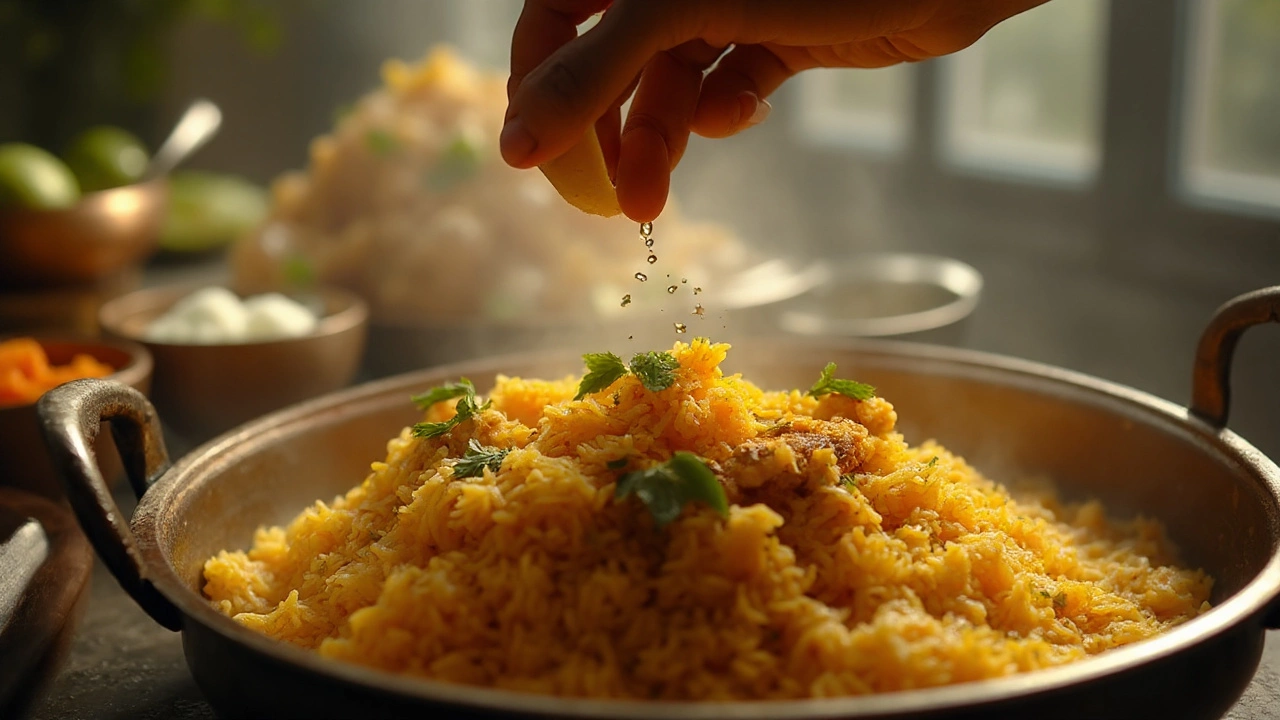Fluffy Rice: How to Get Light, Airy Grains Every Time
When talking about fluffy rice, the goal is a bowl of light, separate grains that feel almost like a cloud on your plate. Also known as airy rice, it’s the cornerstone of dishes like biryani, a layered, aromatic feast where each grain should stand out and the classic basmati rice, the long‑grain variety prized for its fragrance and slender shape. Getting that perfect fluff isn’t magic; it’s a mix of grain choice, soaking, water ratio, and gentle steaming. Below we’ll unpack the science, share the hacks, and set you up for consistent results.
Key Factors That Shape Fluffy Rice
First up, the grain itself. Basmati rice, with its low amylopectin content, naturally separates after cooking unlike short‑grain varieties that tend to clump. If you can’t find basmati, look for jasmine or any long grain that promises a firm bite. Second, soaking, a brief 20‑30 minute dip in cool water does two things: it relaxes the bran layer and lets the grains absorb water evenly. Skipping this step usually results in uneven cooking and a gummy texture. Third, the water‑to‑rice ratio matters. A typical 1.5 : 1 ratio (1½ cups water per cup of rice) works for most stovetop methods, but variations in pot size or altitude may require a tweak. Finally, the cooking technique—whether you’re using a heavy‑bottomed saucepan, a pressure cooker, or a rice cooker—should deliver gentle, steady heat without vigorous boiling. A sudden boil can break the grains and release excess starch, making the rice sticky rather than fluffy.
These elements interlock like a puzzle. Fluffy rice encompasses all of them, and mastering each piece means you’ll never battle mushy rice again. For example, a well‑soaked grain needs less cooking time, which reduces the chance of over‑cooking. Likewise, using a pot with a tight‑fitting lid traps steam, letting the rice finish cooking in its own vapor—a technique that mirrors the way biryani layers are steamed to keep each grain distinct. The relationship between rice soaking and steaming is essential: soak, then steam gently, and you’ll lock in the airy texture.
What does this mean for your kitchen? It means you can pick up any recipe—whether it’s a simple plain rice side, a fragrant yoga‑bowl base, or a show‑stopper biryani—and apply the same core principles. You’ll notice that the fluffier the rice, the better it carries sauces, absorbs flavors, and stays distinct in layered dishes. Below, we’ve gathered articles that dive deeper into each of these topics: from the science behind why basmati stays separate, to step‑by‑step guides on soaking, to expert tips for biryani’s layered perfection. Use this collection as a practical toolbox, and you’ll be turning ordinary grains into culinary stars in no time.

Why Add Lemon to Biryani? Flavor, Tenderness, and Fluffy Rice Explained
Lemon in biryani isn’t a garnish. It brightens flavor, keeps rice fluffy, balances ghee, and fine-tunes marinades. Learn when, how much, and smart substitutes.